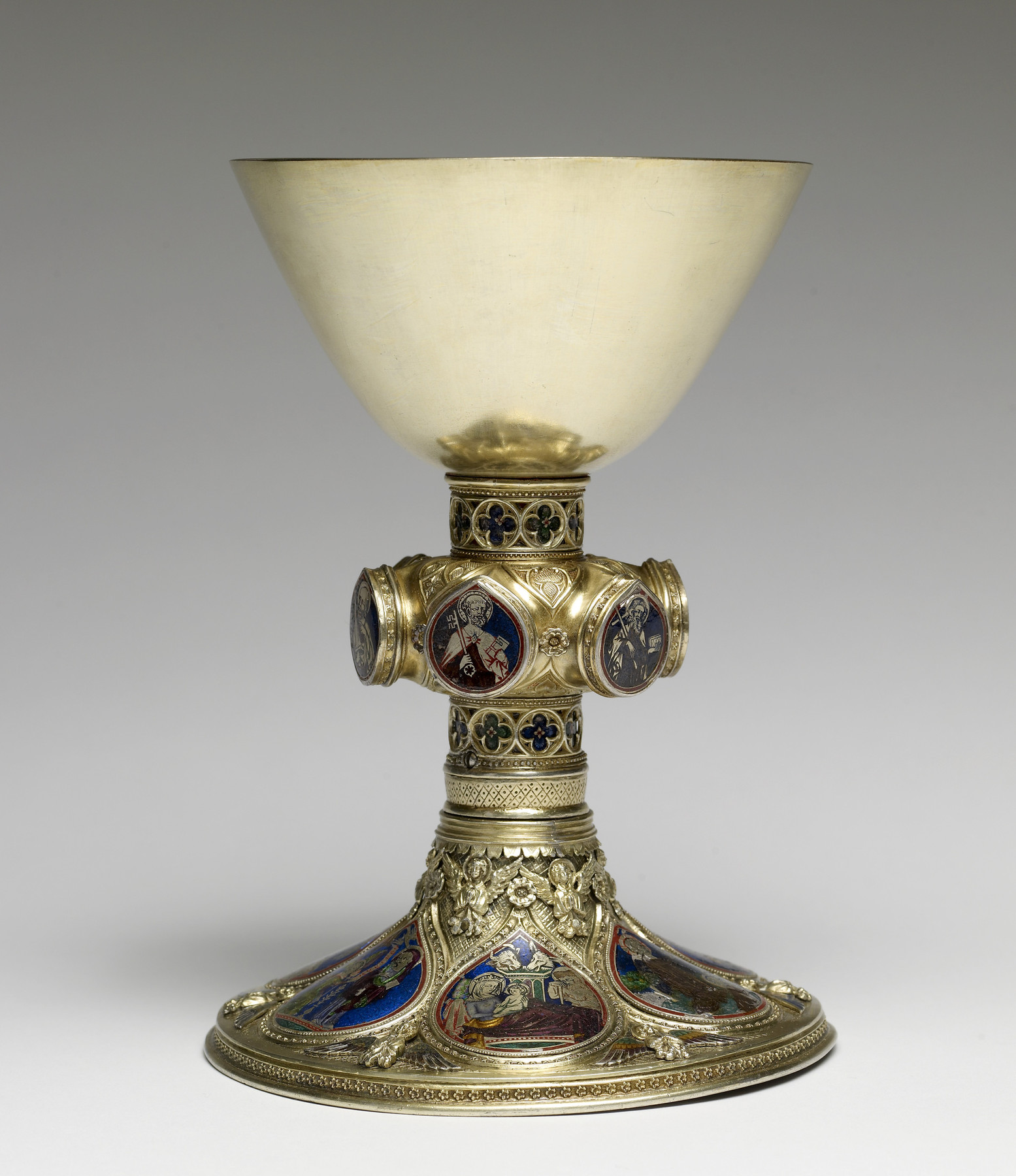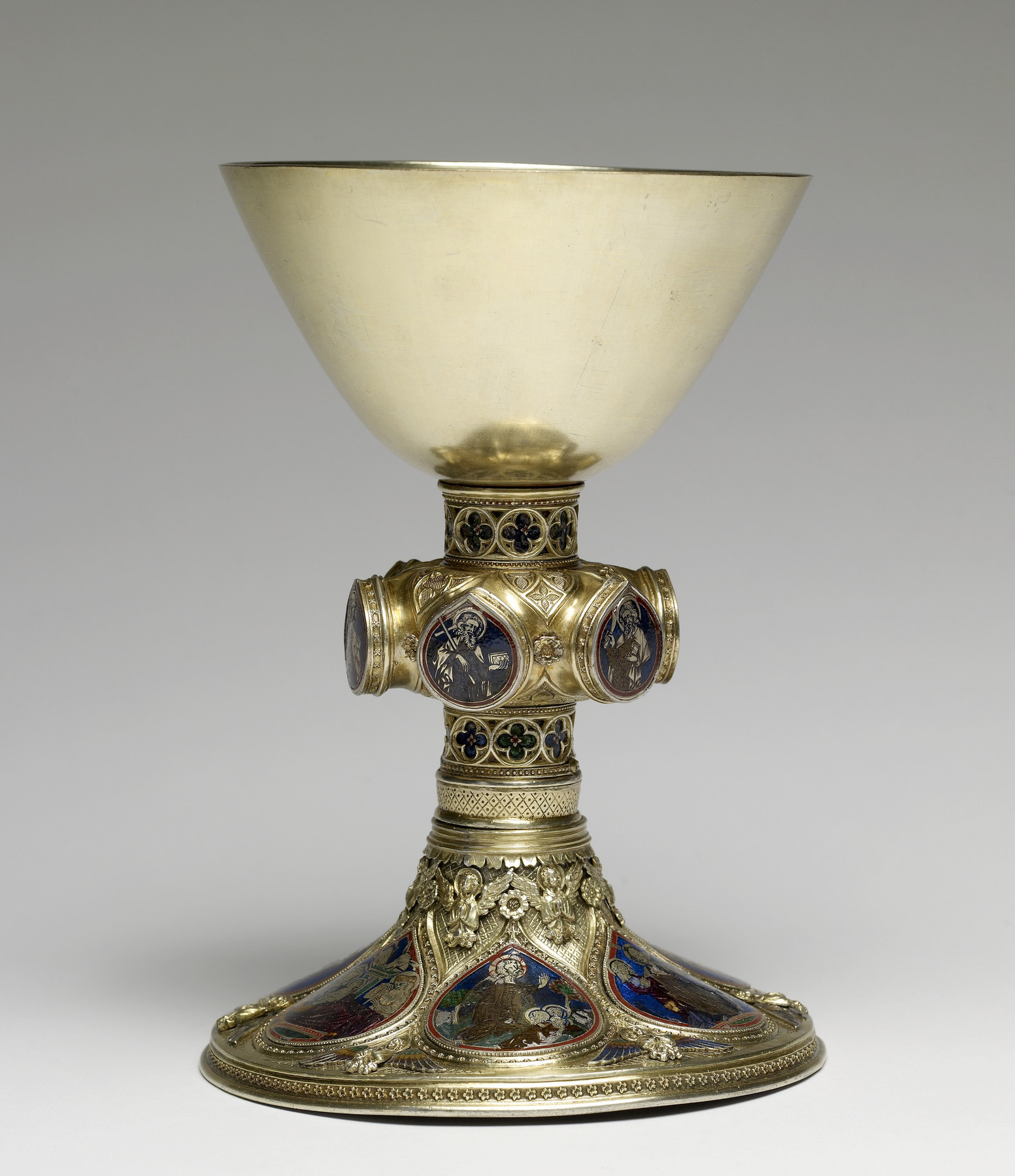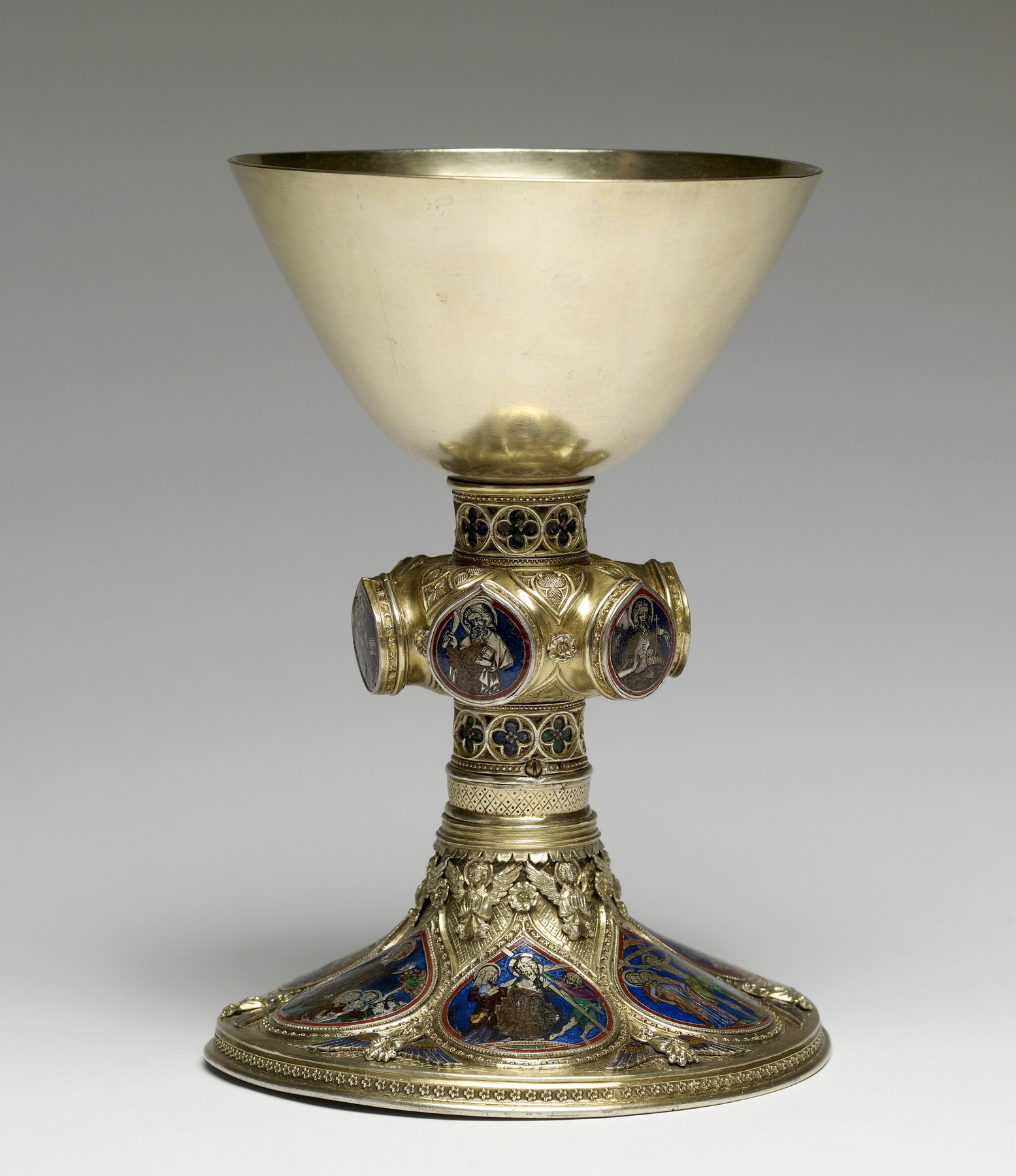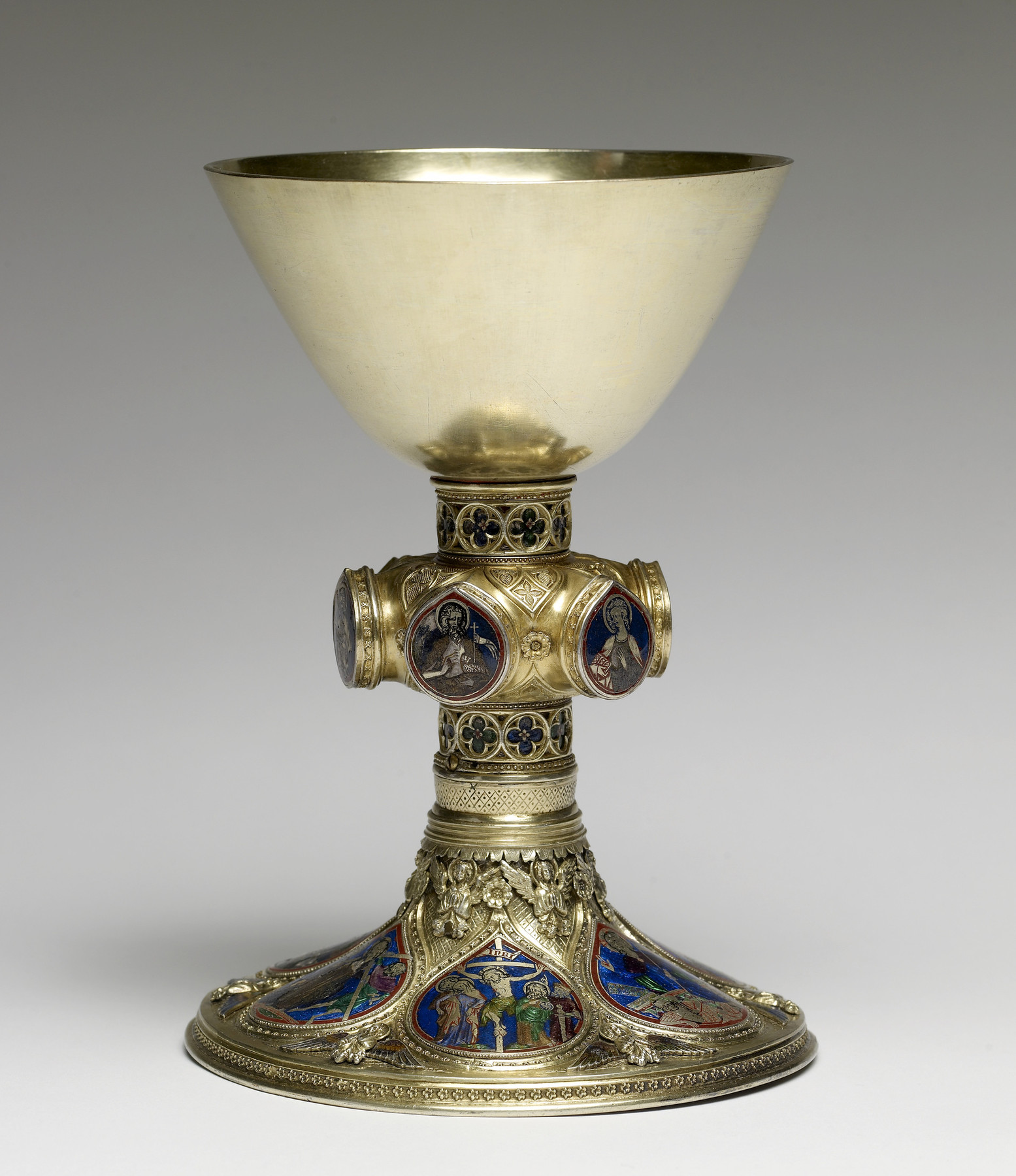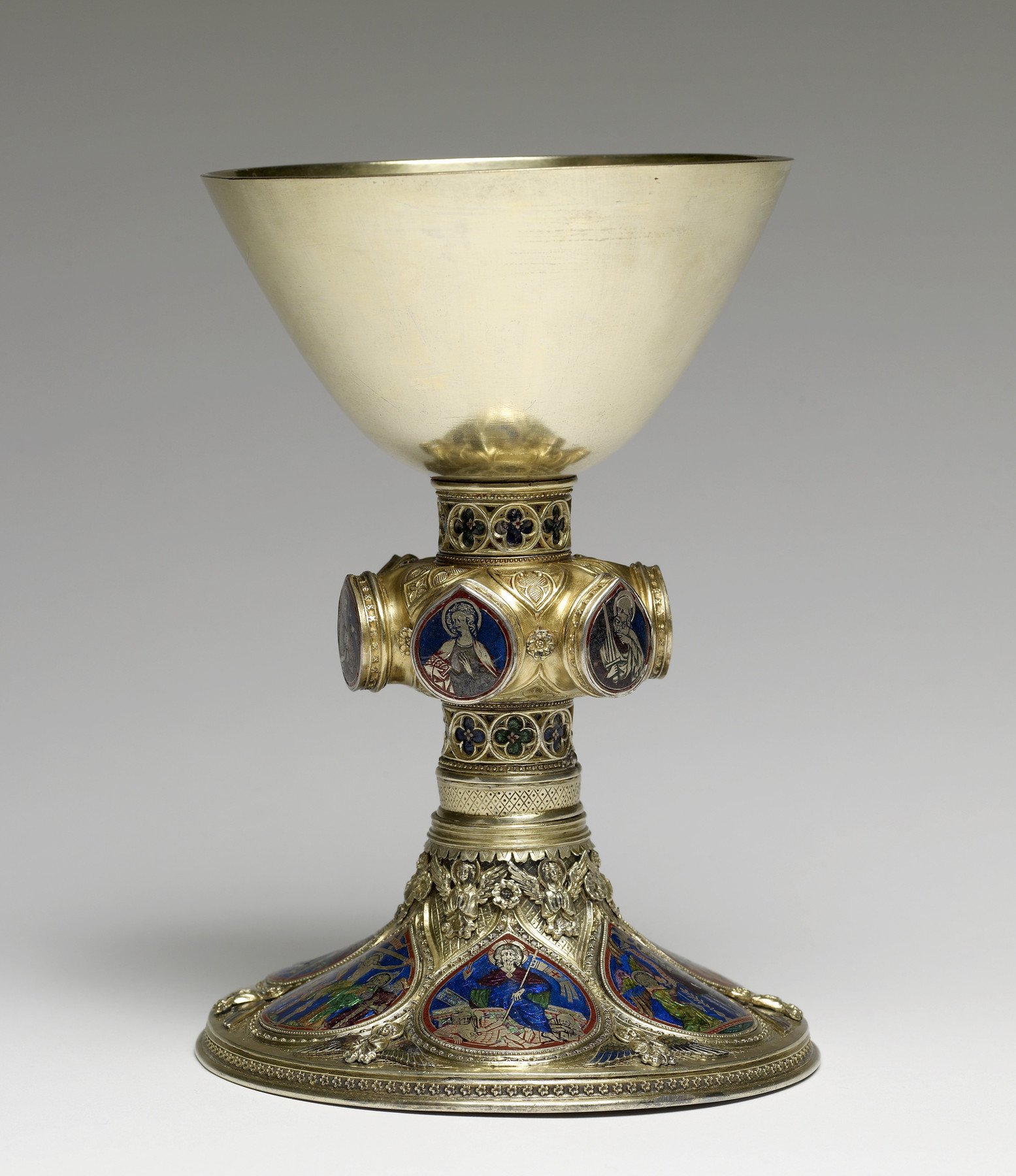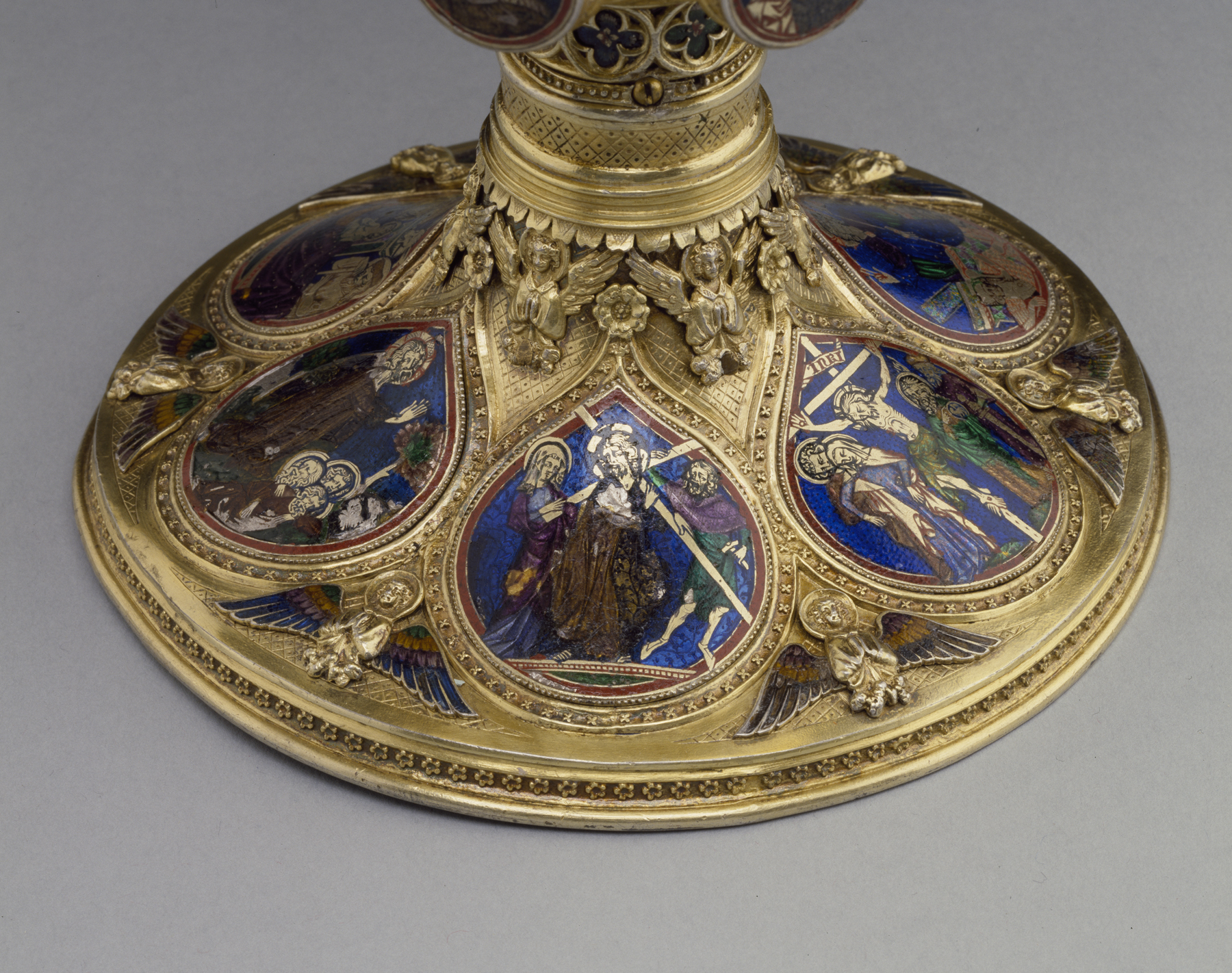Chalice
(Medieval Europe )
The structure of this chalice reflects the rayonnant Gothic style. The translucent plaques around the base illustrate the life of Christ. These are: the Annunciation, the Nativity, the Crucifixion, the Agony in the Garden, the Carrying of the Cross, and the Resurrection. The spaces between the plaques are occupied by low relief angels. The knot is embellished with plaques with portraits of the Apostles. The intense gestures, faces and drapery patterns are typical of the art of Constance at this time. The Sigmarinen chalice, so known after one of its last owners, the Duke of Hohenzollern-Sigmaringen, is the earliest and one of the most imporatnt witnesses of the metalwork production of the city of Constance.
Inscription
Provenance
Provenance (from the French provenir, 'to come from/forth') is the chronology of the ownership, custody, or location of a historical object. Learn more about provenance at the Walters.
Franz Johann von Prassberg, Bishop of Constance; given to the church of St. Theodul, Sachseln, Switzerland, 1654 [1]. Purchased by unknown dealer, Lucerne, 1855; Collection of Duke Karl Anton von Hohenzollern at Sigmaringen Castle; Hohenzollern Collection Sale, 1928. Acquired by Arnold Seligmann Rey & Co., New York; purchased by Henry Walters, Baltimore, 1929; by bequest to Walters Art Museum, 1931.
[1] On the occasion of the beatification of the hermit Niolas of Flüe
Exhibitions
| 2016-2017 | A Feast for the Senses: Art and Experience in Medieval Europe. The Walters Art Museum, Baltimore; The John and Mable Ringling Museum of Art, Sarasota. |
| 1995-1996 | Medieval Art in America 1800-1940, Patterns of Collecting. Palmer Museum of Art, University Park. |
Conservation
| Date | Description | Narrative |
|---|---|---|
| 7/2/1952 | Treatment | cleaned; coated |
| 1/21/1963 | Treatment | cleaned; coated |
Geographies
Germany, Constance (Place of Origin)
Measurements
H: 8 1/8 x W: 5 3/8 in. (20.7 x 13.6 cm)
Credit Line
Acquired by Henry Walters, 1929
Location in Museum
Not on view
Accession Number
In libraries, galleries, museums, and archives, an accession number is a unique identifier assigned to each object in the collection.
In libraries, galleries, museums, and archives, an accession number is a unique identifier assigned to each object in the collection.
44.376


